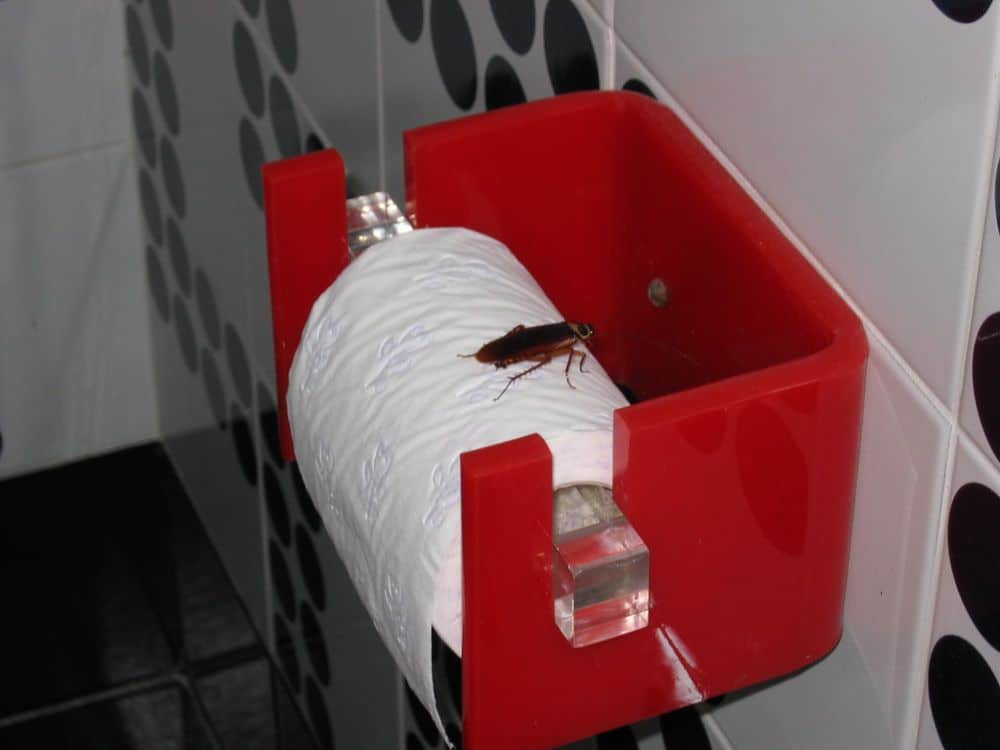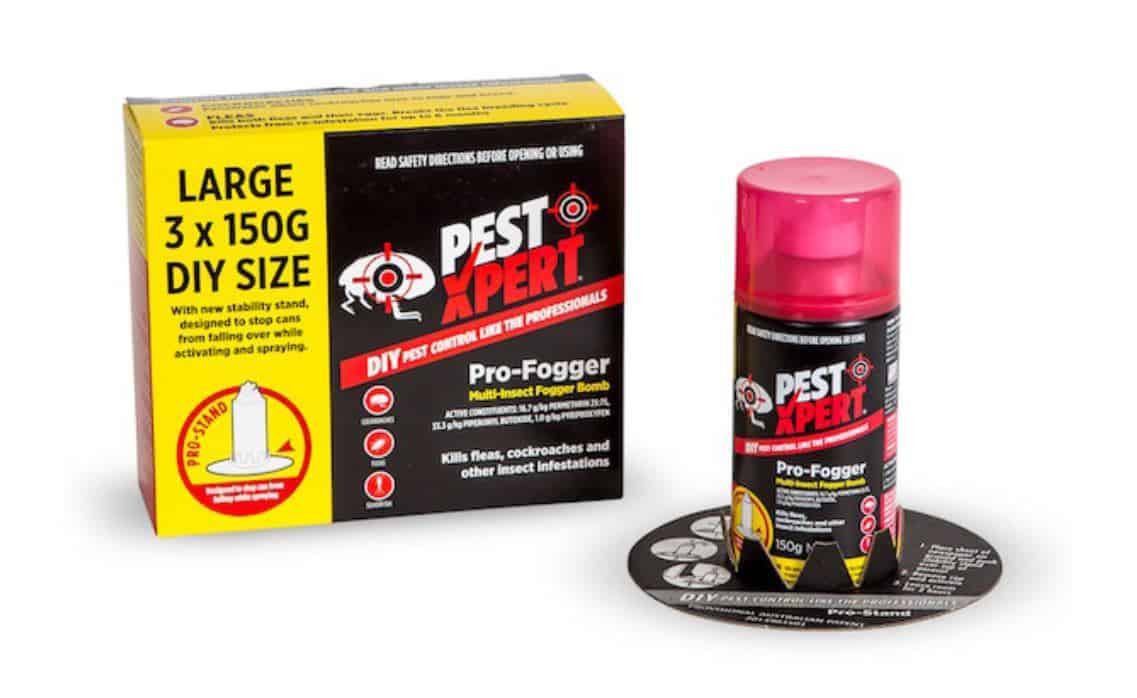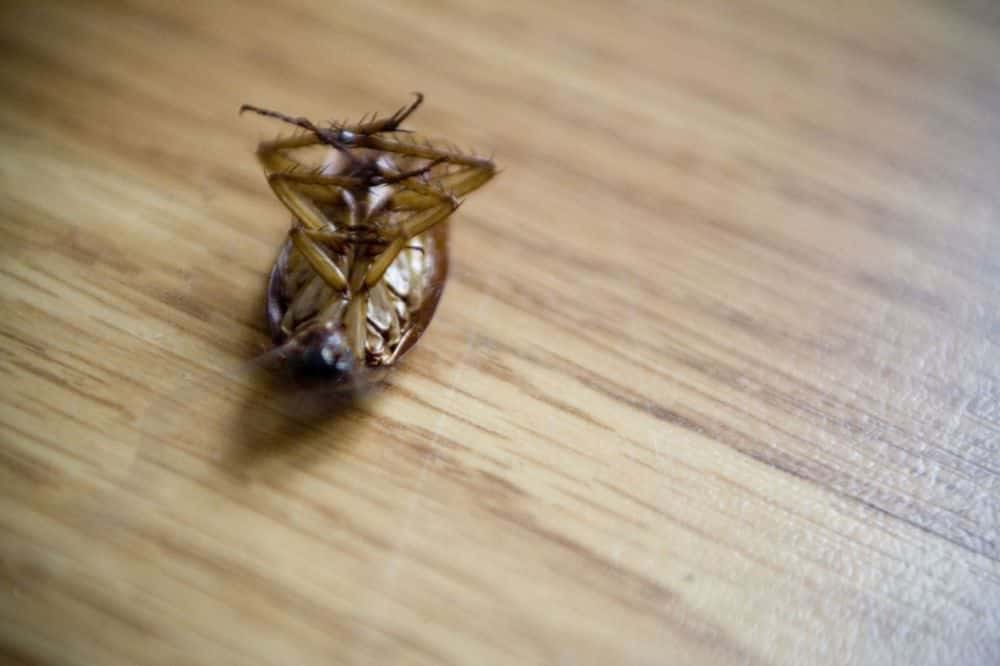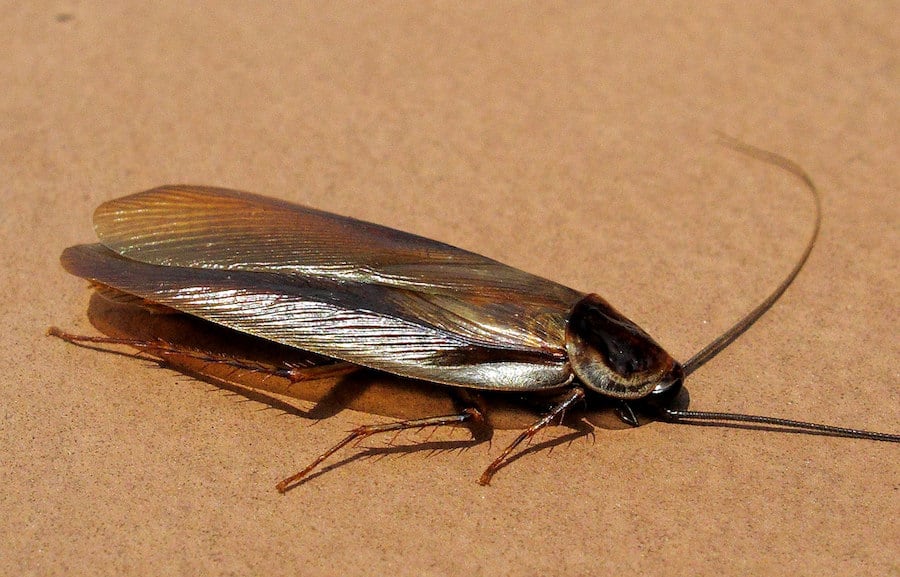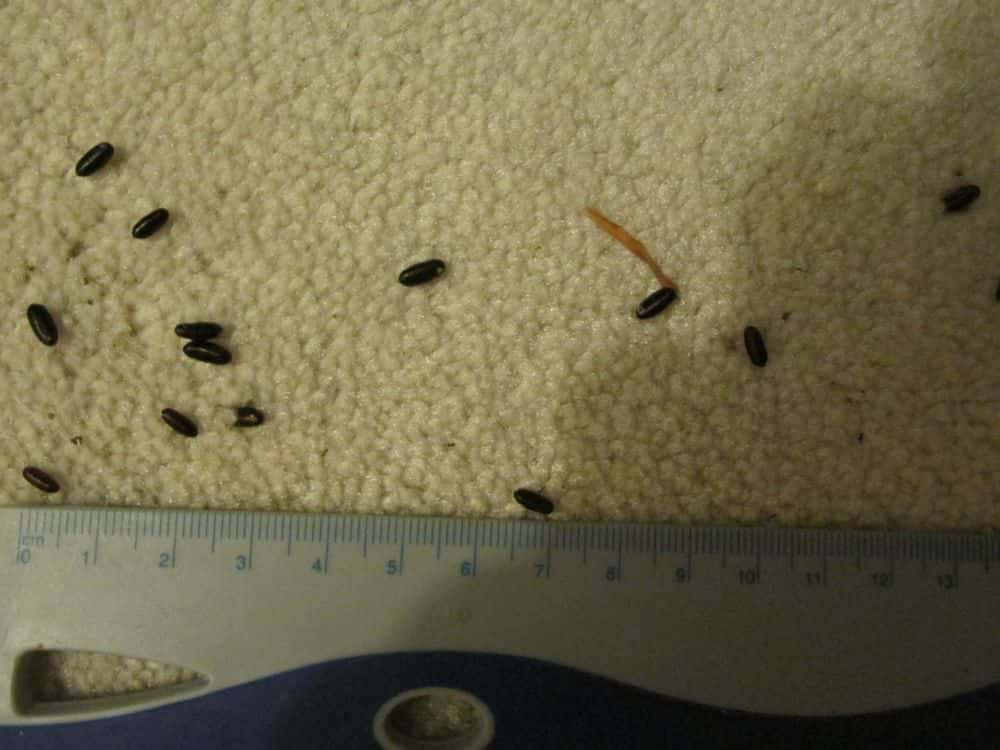How To Get Rid Of German Roaches
Cockroaches are some of the toughest pests we encounter. They can survive on practically anything, and can live anywhere. The German cockroach is found throughout the world, and it is the most common type of roach in the United States.
These pests are often found in residential areas, as well as in restaurants and hotels. Don’t let their name fool you: they aren’t actually from Germany, but are thought to be of African origin. In Germany, they are actually referred to as Russian roaches. Not only are they the most common roach in the US, but also in the world—making this a global pest.
We are about to get up close and personal with these German roaches. We’ll be looking at where they live, what they look like, and most importantly, how to get rid of them.
What Do German Roaches Look Like?
Cockroaches come in various sizes. The largest reported cockroach, which was found in Peru, grew to reach a mind-blowing 3.8 inches long.
Lucky for us here in the U.S., German roaches won’t grow that large. These common cockroaches are usually between ½ an inch and ⅝ of an inch long, which is manageable. It’s also a lot less scary.
The German cockroach has a brown or tan color. It has two black stripes running parallel from its head, which distinguishes it from other types of roach.
Antennae
These roaches have two very long antennae, which appear to be almost as long as the roach itself. The antenna has three parts, which help to direct the cockroach and sense its surroundings.
The first two parts of the antenna are called the scape and pedicel. These allow the cockroach to move the antenna in all directions. They help the cockroach sense movements and positions of the objects around it.
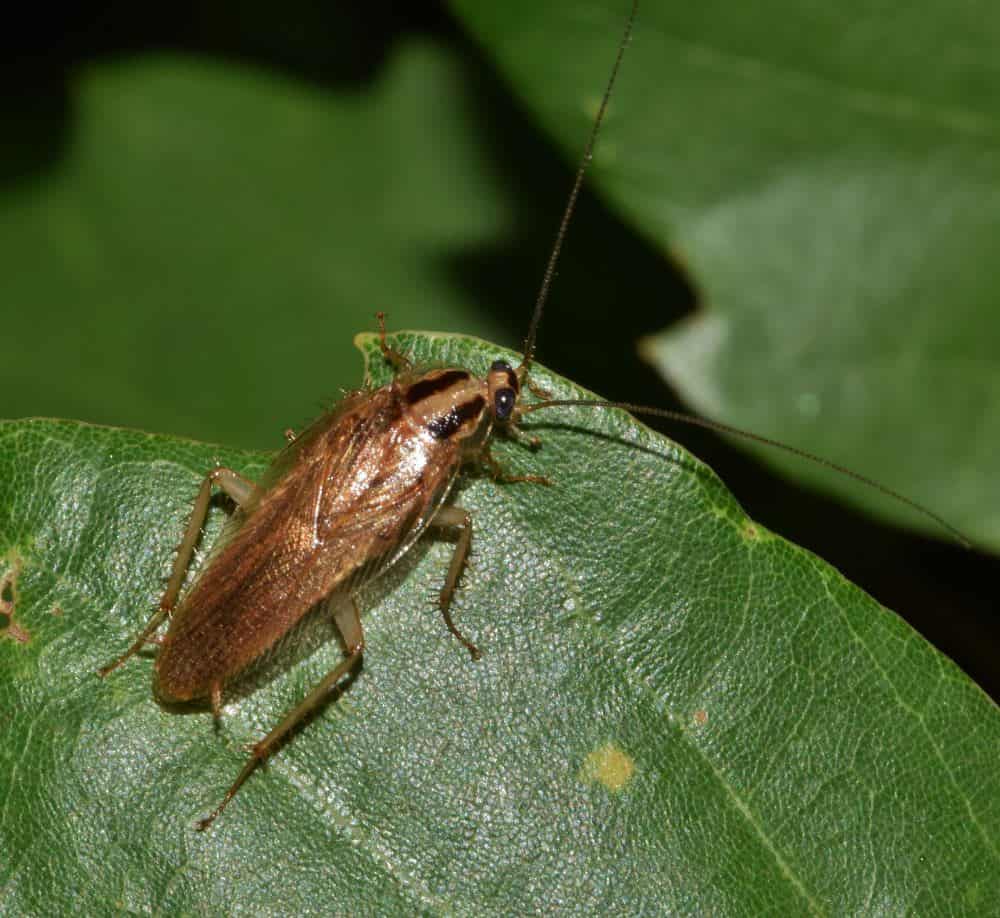
There are around 150 small segments which make up the last part of the antenna, the flagellum. It is covered in sensilla, which are tiny hairs that give the cockroach its senses.
The cockroach has an incredible sense of smell. It is able to distinguish chemicals from potential food sources, as well as sense humidity, temperature and air pressure.
The roaches’ antennae never stay still. Cockroaches are always moving them up and down and from side to side. They do this because it is the only way for them to know what is going on around them. Roaches will follow their senses to their next destination.
The cockroach has a nervous system just like any other living creature. It is typically made up of two “centers” in the brain. The first one processes the temperature, humidity and scents that it encounters. The second sensor identifies signals of movements from its surroundings, sent by the scape and pedicel in the antennae.
Six Legs and a Potential Danger
The German cockroach has six legs, which makes it the “Speedy Gonzales” of roaches. On its legs and body, there are tiny spines. These tactile spines are actually organs which allow the cockroach to sense touch as it moves around.
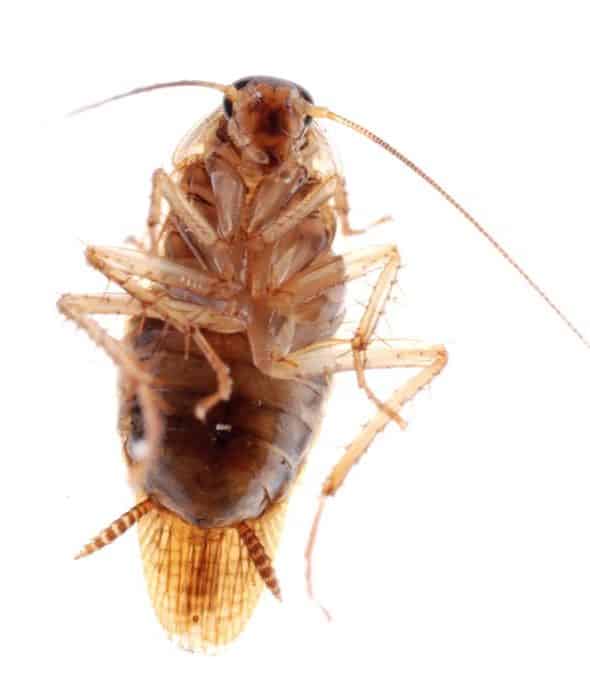
Cockroaches don’t usually bite humans, but they can spread diseases in other ways. The spines on the body and legs of the roaches, pick up bacteria and parasites. As they walk through sewage or other disease-ridden places, they are essentially magnets for germs.
The cockroaches will then make their way into our kitchens- one of their favorite places to hang out, due to a multitude of food sources, and plenty of nooks and crannies to hide in. As they make contact with our food and cooking surfaces, they can transfer these bacteria and parasites to them.
The German cockroach has been the prime suspect in many illness outbreaks, as well as allergic reactions. Cockroaches have been estimated to spread at least 32 different kinds of bacteria. They have also transmitted seven human pathogens, and six different parasitic worms. The infections they have spread include salmonella, cholera, and typhoid fever.
Studies show that the allergens carried by German cockroaches can cause severe reactions in humans. Additionally, they can also intensify asthma attacks. Controlling them is therefore vital, especially if you have children who are prone to allergies and asthma.
Life Cycle
German cockroaches, similar to other insects, have several stages of life. These roaches have three stages: egg, nymph, and adult. The life cycle from egg to a full grown adult takes approximately 100 days. This depends on the environment, diet and of course, the effectiveness of our pest-control efforts.
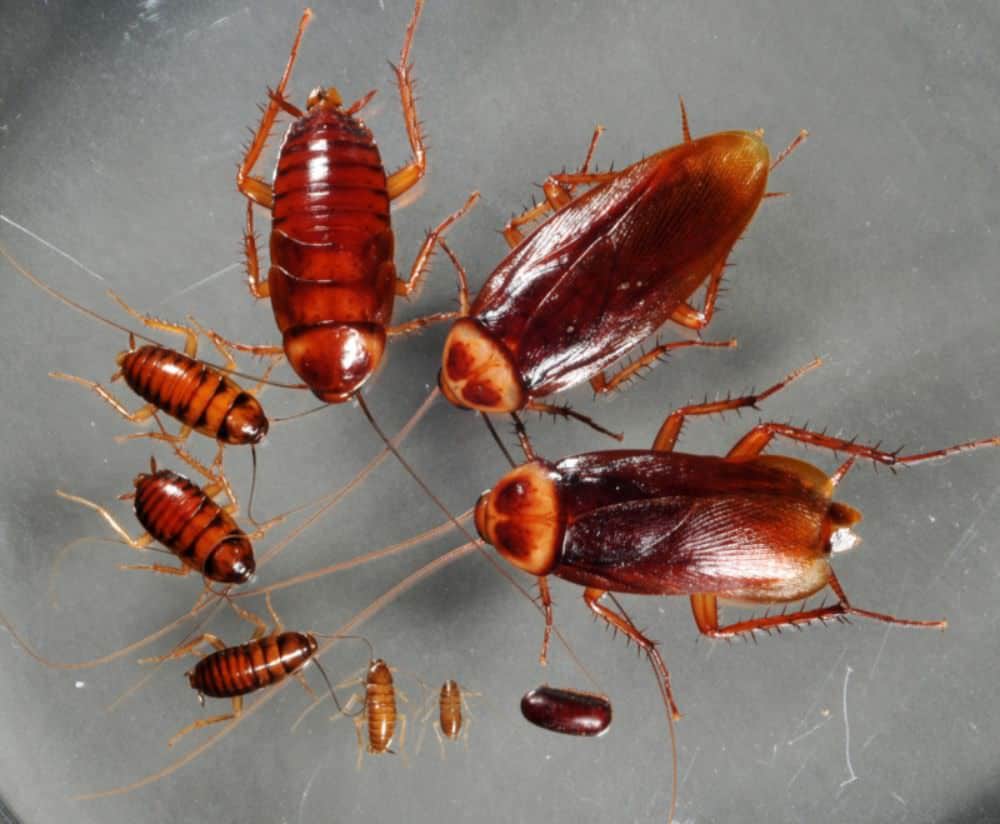
Eggs
German roaches start their life as eggs. The eggs are carried inside a casing known as an ootheca, which can contain around 35 eggs at one time. The female roach will carry the eggs around outside of her abdomen, until two days prior to their hatching. She will then find a secure location and drop the ootheca off, so the eggs can finish developing and later hatch.
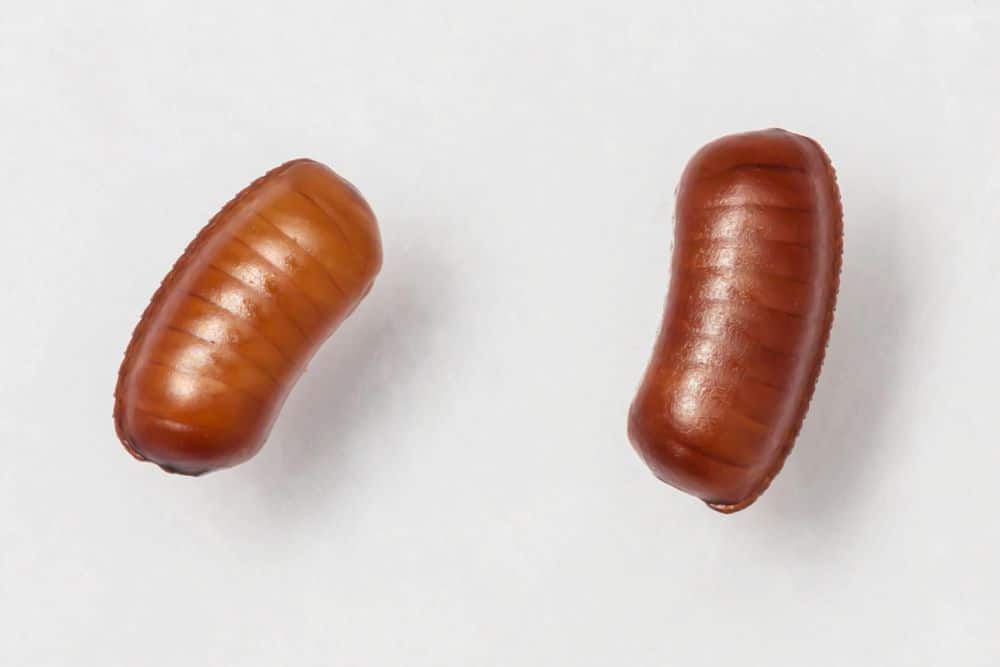
The tiny ootheca is less than ¼ inch long. It has a brown color, similar to the roach itself. The ootheca is very tough; it can withstand harsh conditions such as temperature change and bad weather.
Nymph
Cockroaches don’t have a larvae stage, they emerge from the ootheca as tiny nymph roaches, ready to grow and explore their surroundings. The German nymphs will start their life with hard white skin which covers their body.
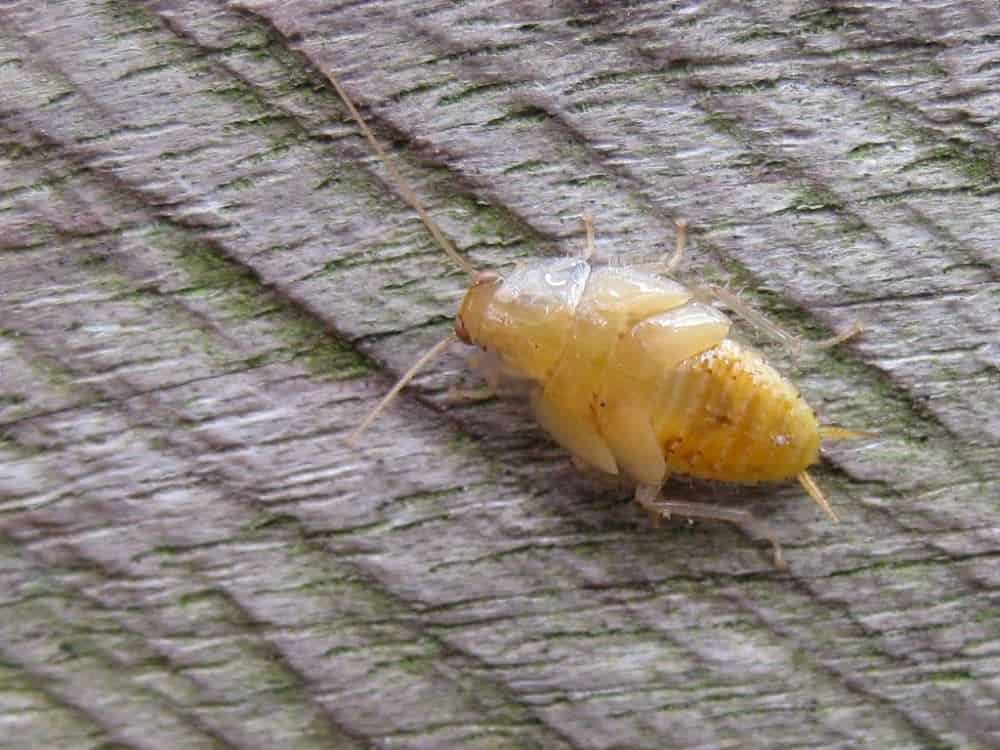
The cuticles will soon darken in color, becoming dark brown or even black. They still have the signature black lines running from their head, as well as a light stripe that runs down their back.
These nymphs may look like cockroaches, but they aren’t. The baby roaches don’t have wings, and they can’t reproduce. Nymphs will typically feed on the same types of food as the adults, which we will talk about later.
The nymphs grow fast, shedding their exoskeletons several times, to accommodate their growing body.
German cockroach nymphs defecate, just like babies of other species. Their poop can emit special chemicals—or pheromones—which will aggravate other nymphs within their population. These chemicals emit a scent that is very unpleasant for us humans.
Folk who only have a small population of nymphs living within their house may not discover the scent at all. Unlucky people, on the other hand, may begin to notice a musty smell, which is a tell-tale sign of infestation.
Adult
Once the nymph roach has shed its last exoskeleton, it will become the fully grown German cockroach that will roam our kitchens. Adult roaches are nocturnal insects, which means they don’t like the light. They usually hide away during the day and then come out during the night.
The best thing about cockroaches is that they don’t find any interest in humans, other than our food of course. This lack of interest means we rarely see them. We might catch a peak as we reach for something they are hiding behind, or if we are close to stepping on one.
Occasionally you might notice some nymphs running around, in addition to the adults. However, I highly doubt you will ever see the eggs or oothecae, unless you search hard. The unhatched eggs may be found in places where the roaches congregate.
Diet
Cockroaches are not picky at all, and will eat practically anything. They do have some favorites though, which include starches, grease, sweets and—above all—meat products.
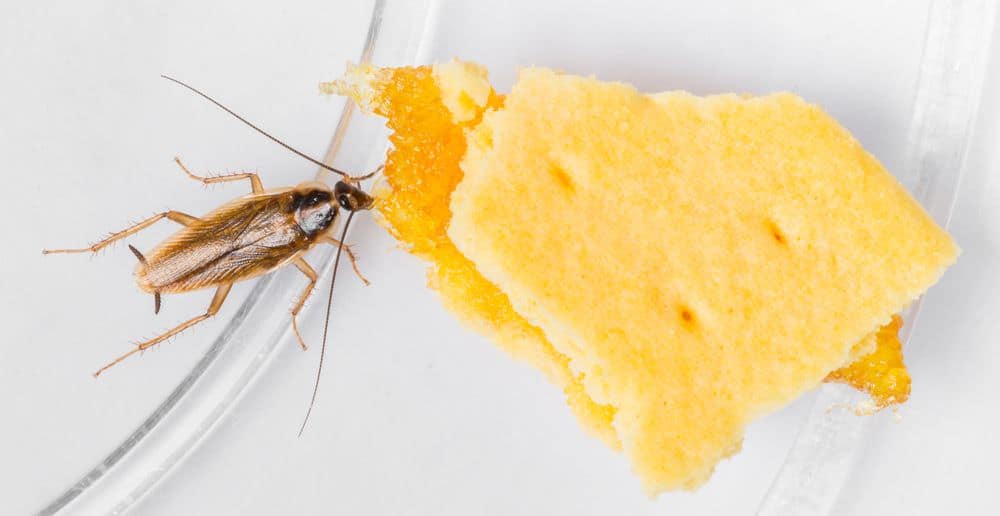
Sweet cereals, chocolate and jams are among the roaches’ favorite treats. They can’t get enough glucose, which is why it is featured in many cockroach baits. Another form of sugar they love is fructose, which is the natural sugar found in fruits.
German cockroaches also love meat. They won’t go feeding off of live animals, but they will take a bite out of the chicken or beef that might be left over from last night’s dinner. They are also known to be partial to fish.
Sometimes the roaches can’t find their sweet, meaty meals, so they have to resort to other items. Remember how I said they aren’t picky eaters? German cockroaches will feed on anything, from soap to glue, and even toothpaste: make sure you close the tube securely.
Some of the more surprising things that cockroaches will feed on are fingernails, human hair, eyelashes, and even dead skin. Don’t worry, these are last resorts for the roaches. Even if they do go for these sources, they won’t be directly from your body.
German cockroaches are adaptive scavengers, meaning they will eat anything within their reach. You might notice small chunks are missing from an old book, or even old clothes in the back of the closet. This may well be the doing of the little-unwanted guest living in your bedroom.
As I’ve said, roaches adapt their diet to their environment. The cockroach living in your home will most likely eat your food. The insect living in the sewer will feed on whatever it can find there.
Cannibalism
Since cockroaches will eat close to anything, how come they sometimes turn to one another as a food source? As the female will lay around 380 eggs during her life, one can imagine what that breeding rate does to an infestation. The more cockroaches there are, the less food they will have. Naturally, they turn on each other to make up for the food they can’t find.
It is, typically, the stronger roaches which feed on the weaker. Even the nymphs tend to eat other nymphs during a heavy infestation. The German nymphs will sometimes even feed during the day. This is in order to avoid being consumed by the adults.
These nymphs will appear during daylight hours to feed on food debris and other delicious things they can find. In this way, they avoid the adults, until they are large enough to fight back.
As I mentioned previously, the nymphs release a particular chemical, which has a horrible odor. It isn’t only humans who find this musty smell appalling; so do the adult roaches. When the nymphs feel threatened, they will release this chemical, making the adults run away in search of fresh air.
Cannibalism is a way for the cockroaches to regulate their population. Eliminating some of the members means there will be more food to go around for those who remain. It is important to know that the cannibalism which sometimes occurs among the roaches, is only a survival method. When they have plenty of food, they won’t turn to eating their fellow roaches.
Water
Like all other living creatures, German roaches need water. The more food and/or water they have, the longer they will live. Their diet often includes moist food. This means they can survive for longer periods without water, only relying on what they eat. The same goes for the cockroaches who live in a place without food, but lots of water. They can survive, but will most likely move around until they find something to eat.
How Common Are German Cockroaches?
Of more than 70 species of cockroaches living in the United States, the German cockroach is the most common. They love warm, humid environments and are often found inside homes. If you have ever seen a cockroach in or near your home, chances are it was a German roach.
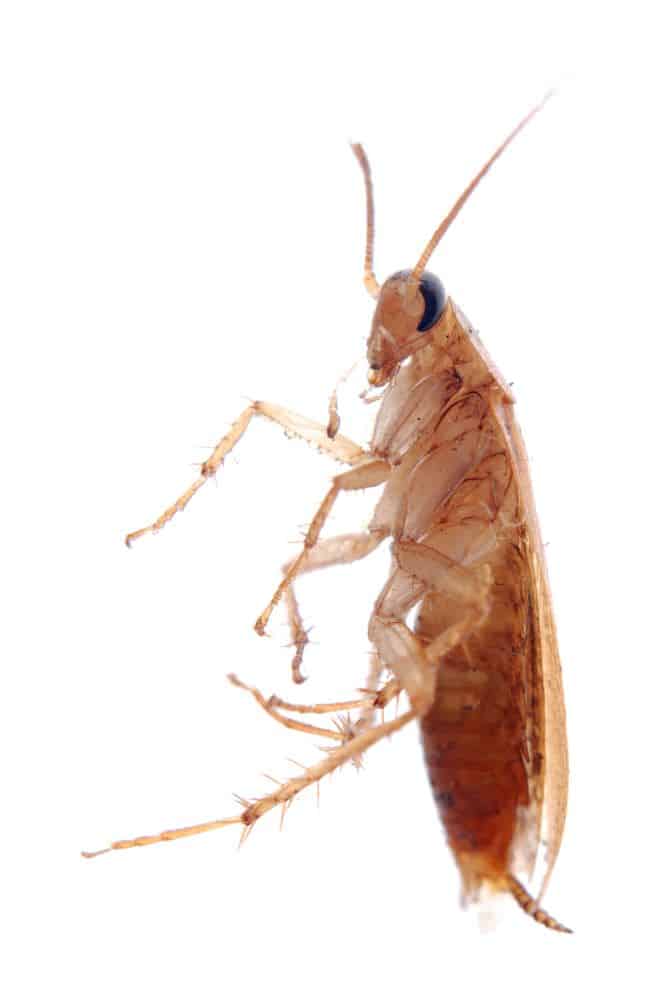
Even though they prefer warm environments, the German roaches have been found in colder climates, such as Patagonia. Since all the roaches really need is food and water, anywhere that provides this, could be home for an infestation.
Can German Roaches Fly?
Adult German cockroaches have two wings that cling to their body. These may seem like a mere accessory, since these roaches can’t fly. They do, however, use their wings to glide. When they feel threatened or need to change their position, they can spread their wings and let the breeze take them wherever it desires.
Other cockroach species are able to fly, but this isn’t one of them. German roaches depend primarily on their legs to get them where they need to be.
German cockroaches can climb—even on smooth surfaces. Jumping onto a chair or your bed won’t necessarily keep them away. They have a sticky pad on the bottom of their feet. This pad is called an arolium. It works like a suction cup, allowing the roaches to climb all surfaces.
Habitat
German cockroaches are drawn to heat, and they love old furniture or luggage. Even old electronic devices provide great hiding places. Parts of the house that are warm and damp, such as the basement, could be the breeding ground for these pests. Kitchen cabinets, where there are often crumbs or leftover food, can also be the perfect place for German roaches.
The most common place to find these roaches is underneath a sink. People often have a cabinet underneath the sink, either for storage or just to hide the “ugly” part of the plumbing. This area often becomes warm and damp, therefore it’s not uncommon to find one or more roaches here.
Garbage containers provide all of the nutrition that roaches need. They are usually full of leftover foods or old produce, which German cockroaches love to feed on. The garbage container is also the perfect hiding spot for them, since we rarely dig through our trash. Getting rid of waste regularly can eliminate an important food source for the roaches. This will then force them to move on to someplace new.
Moving From Place to Place
German cockroaches are the perfect hitchhikers. They are very good at hiding inside food cartons, shopping bags, and even second-hand appliances. You may be carrying one around without even knowing. German cockroaches can fit through tiny openings, as small as ⅜ of an inch in width.
If you live in a multi-unit apartment building, you might begin to notice a cockroach problem if other people in the building are suffering from one. The German cockroaches will travel from one apartment to another using the pipes which are often shared between the homes.
How to Get Rid of German Roaches
If you suspect that you may have cockroaches in your home, how do you find out and what can you do about it?
Smell
The foul, musty odor which I described earlier is the first sign of an infestation. German cockroaches are very common in restaurants, since they’re attracted to the abundance of food. If you notice this smell when you enter a restaurant, I highly suggest you find another place to eat. German cockroaches are a serious health hazard in restaurants, as they can cause food poisoning.
The same goes for your home. If you ever notice this smell, it might be time for a check. All it takes is one ootheca to be carried in and hatched, and the infestation will begin.
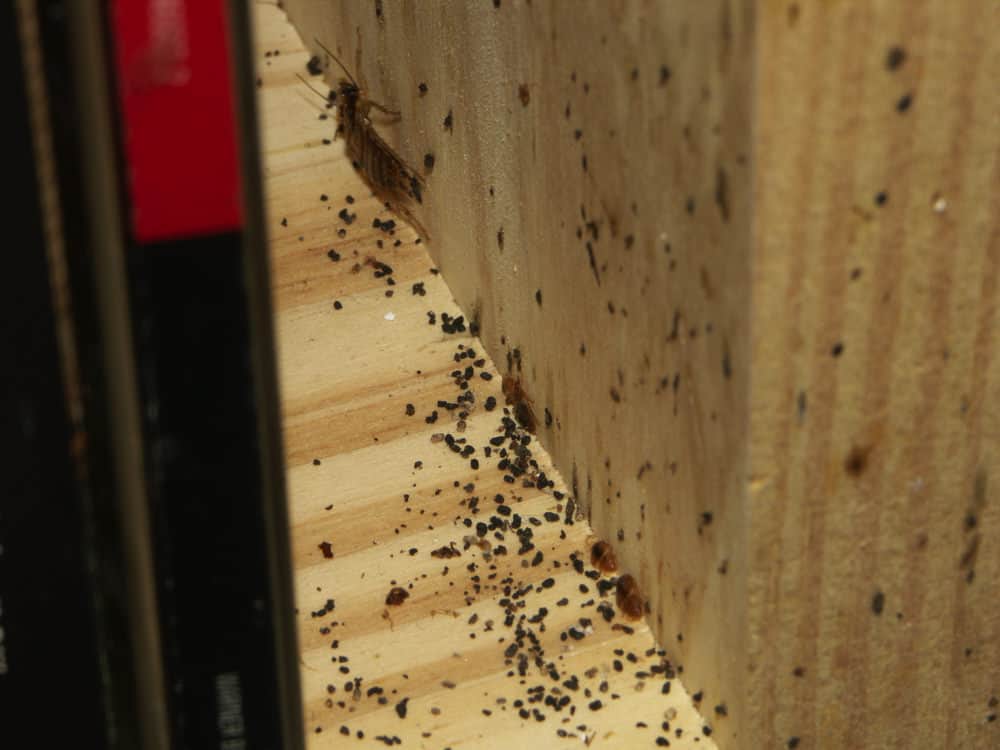
Inspection
Inspecting your home is essential. You need to figure out where the roaches are hiding and how bad the problem is. Using your sense of smell is good, but another sign of an infestation is seeing the insects during the day. Remember that some of them will choose to look for food during the day to avoid being eaten; this makes it easier for you to spot them.
The droppings from the cockroaches will also become very visible. Their feces are actually quite large compared to their small bodies. The droppings will look like black pepper; it could be on the floor or even on the walls. To figure out where an infestation might be, look out for cockroach poop. I recommend using a flashlight to inspect hidden areas, such as:
- Cracks and crevices.
- Behind kitchen appliances, refrigerators and stoves.
- Under and behind the sink.
- Underneath the table top.
- Trash cans.
Bait
Stepping on the occasional cockroach here and there isn’t going to help you out much. Especially, when you consider that their babies are lurking in the shadows. Placing out good quality roach bait is the best way to get rid of an infestation. The location of the population is not always easy to find and, for every cockroach, there are lots of eggs. The bait will target not only the adults, but also the nymphs. There are two types of effective roach bait, which are:
- Gel bait – put a small amount wherever you see the droppings. After a month you should clean out the area, preferably with an antibacterial cleaner.
- Flowable bait – this type of bait should be used where gel bait can’t reach. It is a dry formula, which is perfect for small cracks and crevices.
You should never use repellents—liquid or dust—near the roach baits. Doing this can cause contamination of the baits. I highly recommend using insect growth regulators (IGRs). These reduce the roaches’ ability to reproduce, and can be used along with the other baits.
Some of the IGRs won’t only reduce their ability to reproduce, but will also shorten the adult’s lifespan. Some also target the nymphs, affecting their molting process.
Keep It Clean
Sanitation is the most important consideration when controlling roaches. As we discussed, they thrive around leftover food and garbage. Removing waste regularly and keeping the trash can clean is essential.
Run the garbage disposal often to get rid of any food that might be stuck in the drain. Keep the sink clean as well, making sure there is no food or dirty dishes left there overnight.
If you keep food in containers, it is crucial to keep these securely closed. The last thing you want is for the roach to wander across your food, leaving a trail of bacteria. Or worse, waking up in the morning and seeing a cockroach trapped in last night’s leftovers. Pet food should also be kept in sealed containers.
Always wipe off the appliances, like microwave, toaster, oven and so on. The kitchen counters should also be kept as clean as possible, and food-free. Vacuum and sweep the floors regularly to get rid of any food debris and roach droppings.
Some children and pets, particularly youngsters, can be quite messy when they eat. If you happen to have a messy eater, make sure you clean up any leftover food from the floor.

